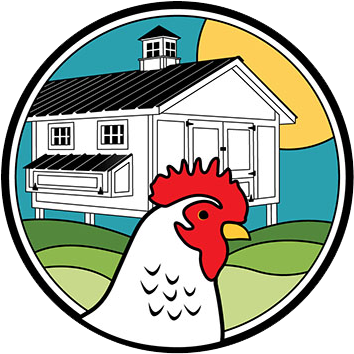Is your once-beautiful hen looking like she's been in a barnyard brawl? Don't panic! She's likely going through molting season – a completely natural process that every chicken experiences.
Table of Content
What is Chicken Molting?
Understanding The Natural Molting Process
Chicken molting is the natural process where chickens shed their old, worn-out feathers and grow fresh, new ones. Just like all birds – from tiny hummingbirds to majestic bald eagles – chickens undergo this essential renewal process.
Think of molting as nature's way of giving your chickens a brand-new winter coat. These new feathers aren't just for looks; they're significantly more efficient at trapping warm air, helping your flock stay cozy through the colder months ahead.

When Do Chickens Molt? A Timeline Guide
Juvenile Molting Stages
Chickens experience several molts throughout their lives:
First molt: Baby chicks lose their fluffy down feathers for their initial set of real feathers
Second molt: Around 8-12 weeks old, juvenile chickens develop their adult color patterns and ornamental feathers (this is often when you'll discover if those "pullets" are actually roosters!)
Adult Molting Schedule
Most chickens experience their first adult molt at 16-18 months old. Young hens under 12 months typically won't molt during their first year, waiting until the following fall season. Some chickens take years before going through a noticeable molt.

These new feathers aren't just for looks; they're significantly more efficient at trapping warm air, helping your flock stay cozy through the colder months ahead.
What Triggers Chicken Molting? The Science Behind the Shed
The primary trigger for chicken molting is decreasing daylight hours in late summer and early fall. This natural light reduction signals your chickens' bodies to begin the molting process.
Additional Molting Triggers
Stress can also trigger premature molting, including:
Inadequate food or water
Extreme heat stress
Poor nutrition
Overcrowding
Predator threats
Broodiness
Impact on Egg Production
The same light decrease that triggers molting also causes a significant reduction or complete stop in egg laying. This happens because the hen's reproductive system naturally regresses, marking the end of her annual egg-laying cycle.
Important note: Molting and decreased egg production are separate processes that happen to be triggered by the same environmental changes.

What to Expect During Chicken Molting: The Complete Process
Molting Duration and Timeline
The chicken molting process typically lasts 8-12 weeks, though this can vary significantly between individual birds.
Molting Progression Pattern
Feather loss follows a predictable pattern:
Head feathers drop first
Neck area follows
Body feathers shed next
Wing feathers molt (primary flight feathers before secondary ones, from inside to outside)
Tail feathers complete the process
Physical Changes to Expect
During molting, you'll notice:
New feather quills or shafts appearing where old feathers fell out
Combs and wattles losing their bright red color (completely normal!)
Some chickens molt partially while others lose nearly every feather
Individual chickens in your flock starting at different times
Behavioral Changes
Don't be surprised if your molting chickens seem:
Less energetic than usual
Grumpier or more irritable
Less social with the flock
These personality changes are temporary, once their gorgeous new feathers grow in, they'll return to their normal, spirited selves!
Pro Tip for Egg Enthusiasts
The fastest molting chickens are typically your best egg layers. After completing their first molt, these productive hens often lay larger, higher-quality eggs.
The fastest molting chickens are typically your best egg layers. After completing their first molt, these productive hens often lay larger, higher-quality eggs.
How to Care for Molting Chickens: 6 Essential Tips
1. Boost Their Protein Intake
Since feathers are approximately 85% protein, increasing your flock's protein consumption is crucial during molting. You can keep feeding layer feed, but add specific high-protein food.
2. Offer High-Protein Treats
Supplement their diet with protein-rich snacks:
Mealworms and black soldier fly larvae
Black oil sunflower seeds
Scrambled eggs
Low-sodium canned fish (in water)
Plain yogurt
Lean meat scraps
3. Include Protein-Rich Herbs
These herbs naturally contain protein and can be offered fresh or dried:
Basil
Coriander
Dill
Fennel
Parsley
Spearmint
Chervil
Marjoram
Tarragon

4. Minimize Handling
Avoid handling molting chickens whenever possible. New feather shafts are extremely sensitive and can bleed profusely if damaged. The growing feathers cause discomfort, making your normally friendly chickens less tolerant of human interaction.
5. Skip the Chicken Sweaters
While it might seem caring to keep a bare-skinned molting chicken warm with clothing, never put sweaters or coats on molting birds. The fabric can irritate sensitive new feathers and potentially cause injury. Be aware that there will be that one chicken that waits until mid-January to molt, usually during the coldest time of the year. They will survive without the sweater, we promise!
6. Monitor for Bullying
Chickens with exposed skin patches may become targets for pecking and bullying from flock mates. Keep a close eye on your molting birds and separate aggressive birds if necessary.


Chicken Molting FAQs
Should I be worried if my chicken looks terrible during molting?
Absolutely not! A raggedy appearance is completely normal during molting. Your chicken will look beautiful again once the new feathers grow in.
Will my chickens lay eggs during molting?
Most chickens significantly reduce or stop laying eggs during molting. This is natural and temporary.
How can I tell the difference between molting and illness?
Molting follows predictable patterns and timing. If you're concerned about your chicken's health, consult a veterinarian.
Do all chickens in my flock molt at the same time?
No, chickens typically begin molting at different times, which can extend the overall process for your entire flock.




